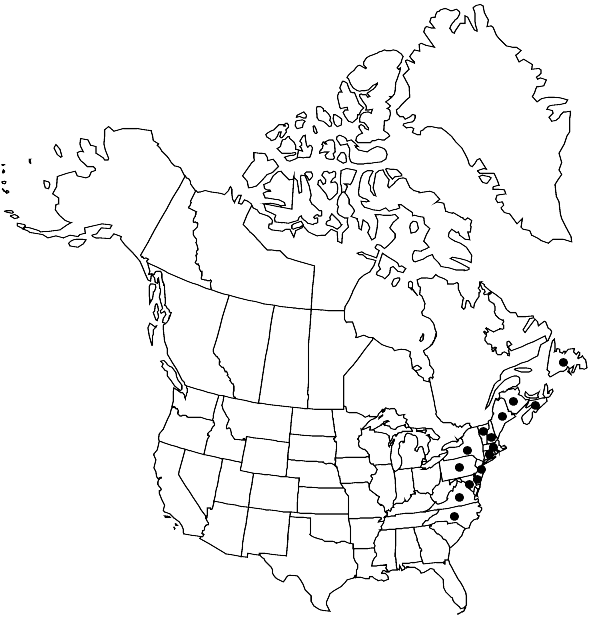Difference between revisions of "Sphagnum atlanticum"
Bryologist 110: 274, figs. 2007,.
FNA>Volume Importer |
imported>Volume Importer |
||
| Line 43: | Line 43: | ||
|publication year= | |publication year= | ||
|special status= | |special status= | ||
| − | |source xml=https:// | + | |source xml=https://bibilujan@bitbucket.org/aafc-mbb/fna-data-curation.git/src/bb6b7e3a7de7d3b7888a1ad48c7fd8f5c722d8d6/coarse_grained_fna_xml/V27/V27_36.xml |
|genus=Sphagnum | |genus=Sphagnum | ||
|section=Sphagnum sect. Cuspidata | |section=Sphagnum sect. Cuspidata | ||
Revision as of 22:31, 27 May 2020
Plants robust and weak-stemmed; green, golden brown to dark brown; capitulum often flat-topped and with a visible terminal bud; flaccid and plumose in submerged forms to more compact in emergent or stranded forms. Stems green to brown; superficial cortex of 1–2 layers of moderately thick-walled and poorly differentiated cells. Stem leaves triangular, large, less than 1.7 mm, mostly appressed to stem, apex weakly apiculate to narrowly obtuse; hyaline cells efibrillose and seldom to often septate at base and sides. Branches unranked, long and tapering, leaves greatly elongate at distal end. Branch fascicles with 2 spreading and 2 pendent branches. Branch stem green, cortex enlarged with conspicuous retort cells. Branch leaves ovate-lanceolate to lanceolate in aquatic forms, ovate to ovate-lanceolate in emergent forms, greater than 2.5 mm, often falcate-secund, especially in submerged forms, weakly undulate and recurved when dry; margin entire, hyaline cells on convex surface with 0–1 pores per cell, concave surface with round wall thinnings in the cell apices and angles; chlorophyllous cells narrowly triangular in transverse section and well-enclosed on the concave surface. Sexual condition dioicous. Sporophytes not seen.
Habitat: Forming loose carpets in pools in weakly minerotrophic fens
Elevation: low elevations
Distribution

N.B., Nfld. and Labr. (Nfld.), N.S., Conn., Del., Maine, Md., Mass., N.H., N.J., N.Y., N.C., Pa., R.I., Vt., Va.
Discussion
Sporophytes of Sphagnum atlanticum are rare. The other large North American Atlantic coastal plain species of sect. Cuspidata, S. torreyanum, is typically more yellow, has a more rounded capitulum, and has straight rather than subsecund branch leaves.
Selected References
None.